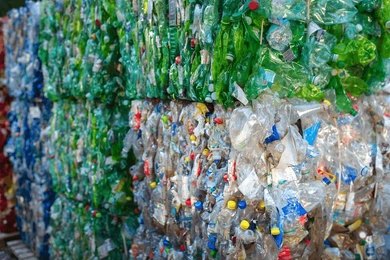Plastic pollution is drowning our planet. Every year, millions of tons of plastic waste flood landfills and oceans, harming wildlife and ecosystems. But how much of the world’s plastic waste is recycled? The answer may shock you. Despite global efforts, only a tiny fraction gets a second life—the rest pollutes our environment indefinitely.
In this article, we’ll uncover the harsh reality of plastic recycling, explore why current systems fail, and reveal what can be done to improve. By the end, you’ll understand the scale of the crisis—and how you can be part of the solution.
How Much of the World’s Plastic Waste Is Recycled? (Key Stats)
Before diving deeper, let’s look at the hard numbers:
| Statistic | Value |
| Global plastic waste generated annually | 400 million tons |
| Plastic waste recycled globally | Only 9% |
| Plastic waste incinerated | 12% |
| Plastic waste in landfills & environment | 79% |
(Source: OECD Global Plastic Outlook, 2022)
These figures reveal a grim reality: 91% of plastic waste is NOT recycled. Instead, it ends up in landfills, oceans, or burned—releasing toxic chemicals.
Why Is So Little Plastic Recycled?
Understanding why recycling rates are so low requires examining key barriers:
1. Complexity of Plastic Types
Not all plastics are equal. The most common types include:
- PET (Polyethylene Terephthalate) – Used in bottles (recyclable)
- HDPE (High-Density Polyethylene) – Milk jugs, detergent bottles (recyclable)
- PVC (Polyvinyl Chloride) – Pipes, packaging (rarely recycled)
- LDPE (Low-Density Polyethylene) – Plastic bags (difficult to recycle)
- PP (Polypropylene) – Food containers (sometimes recycled)
- PS (Polystyrene) – Styrofoam (almost never recycled)
Problem: Mixed plastics require separate processing, and many facilities can’t handle them.
2. Contamination Issues
- Food residue, labels, and non-recyclable materials make plastic unusable.
- Only clean, sorted plastic can be recycled efficiently.
3. Economic Challenges
- Virgin plastic is cheaper to produce than recycled plastic.
- Many countries lack proper recycling infrastructure.
4. Exporting Waste to Developing Nations
- Wealthy nations often ship plastic waste to poorer countries (e.g., Malaysia, Indonesia).
- Much of it ends up dumped or burned illegally.
Which Countries Recycle the Most Plastic?
While global recycling rates are dismal, some nations perform better:
| Country | Plastic Recycling Rate |
| Germany | 56% |
| South Korea | 54% |
| Slovenia | 53% |
| Austria | 50% |
| Netherlands | 49% |
| United States | 5% |
| Global Average | 9% |
Key Takeaway: Europe leads in recycling, while the U.S. lags far behind.
What Happens to Unrecycled Plastic?
Since only 9% of plastic is recycled, where does the rest go?
- Landfills (50%) – Plastic takes 400+ years to decompose, leaching chemicals.
- Incineration (12%) – Burning plastic releases toxic fumes (dioxins).
- Oceans (22%) – 11 million tons enter oceans yearly, killing marine life.
- Illegal Dumping (16%) – Often dumped in developing nations.
Can We Improve Plastic Recycling Rates?
Yes—but it requires systemic change:
1. Better Recycling Infrastructure
- Invest in advanced sorting facilities.
- Standardize recycling labels globally.
2. Reduce Single-Use Plastics
- Ban unnecessary plastics (straws, cutlery).
- Promote reusable alternatives.
3. Hold Corporations Accountable
- 72% of plastic waste comes from packaging (Coca-Cola, Pepsi, Nestlé).
- Push for extended producer responsibility (EPR) laws.
4. Consumer Action
- Recycle correctly (check local guidelines).
- Support brands using post-consumer recycled (PCR) plastic.
Final Thoughts: The Future of Plastic Recycling
The question “How much of the world’s plastic waste is recycled?” has a sobering answer: only 9%. The rest pollutes our planet indefinitely.
But change is possible. With better policies, corporate accountability, and individual action, we can shift toward a circular economy—where plastic is reused, not wasted.
What You Can Do Today:
✔ Reduce single-use plastics.
✔ Recycle properly.
✔ Demand corporate & government action.
The plastic crisis won’t fix itself—we must act now.

